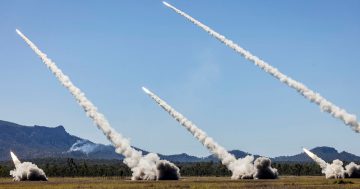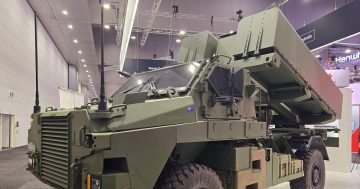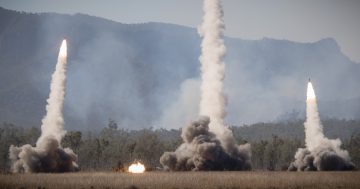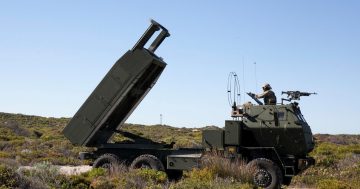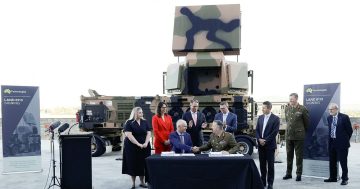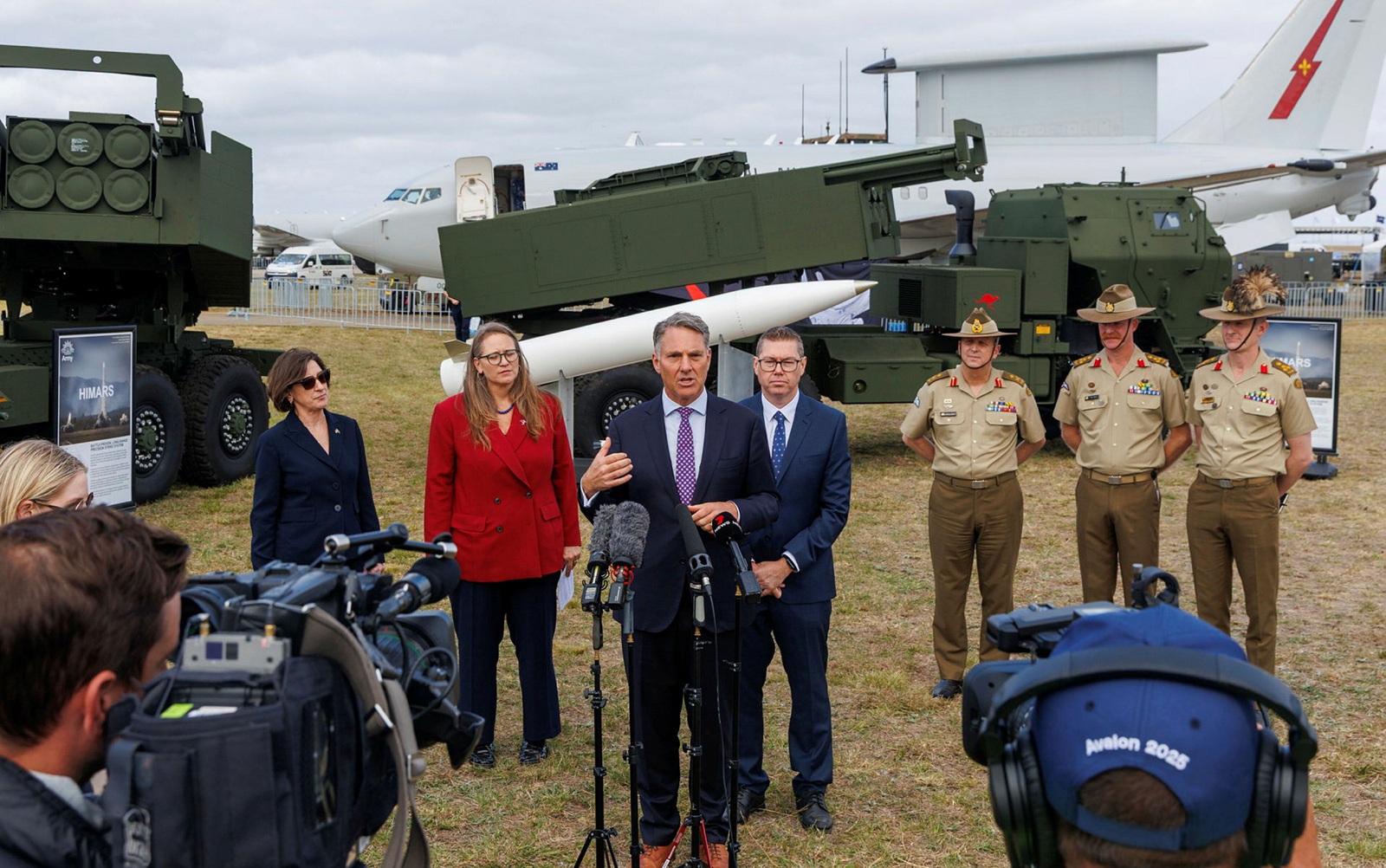
Defence Minister Richard Marles (front) and Defence Industry and Capability Delivery Minister Pat Conroy unveil the first two HIMARS systems at the recent Avalon Airshow. Photos: ADF.
The first two M142 High Mobility Artillery Rocket Systems (HIMARS) launcher vehicles have been delivered to the Australian Army.
Australia is buying 42 HIMARS vehicles under Project LAND 8113 Phase 1. The contract for the systems was signed in 2023, and the program was expanded and accelerated under the government’s 2024 National Defence Strategy and accompanying Integrated Investment Plan.
Manufactured by Lockheed Martin in Texas in the US, each HIMARS system can employ six Guided Multiple Launch Rocket System (GMLRS) rockets or two larger Precision Strike Missiles (PrSM).
The basic GMLRS missile, which will be assembled in Australia from late 2025, has a range of more than 80 kilometres, while the extended-range GMLRS-ER will reach 150 km.
Currently entering service in the US, the PrSM Increment 1 has a range of more than 400 km, while the new PrSM Increment 4 will fly more than 1000 km and have an anti-ship capability.
The M142 is designed to be carried by a C-130J Hercules, of which the RAAF currently has 12 and will soon have 20, and which can land at forward unprepared airfields.
An operational concept would see the aircraft land and the HIMARS launcher/s rolled out the back of the aircraft to a launch position. The GLMRS or PrSM rounds are then fired, the HIMARS returns to the aircraft, and the aircraft take off before counter-fires can be employed against the launch position.
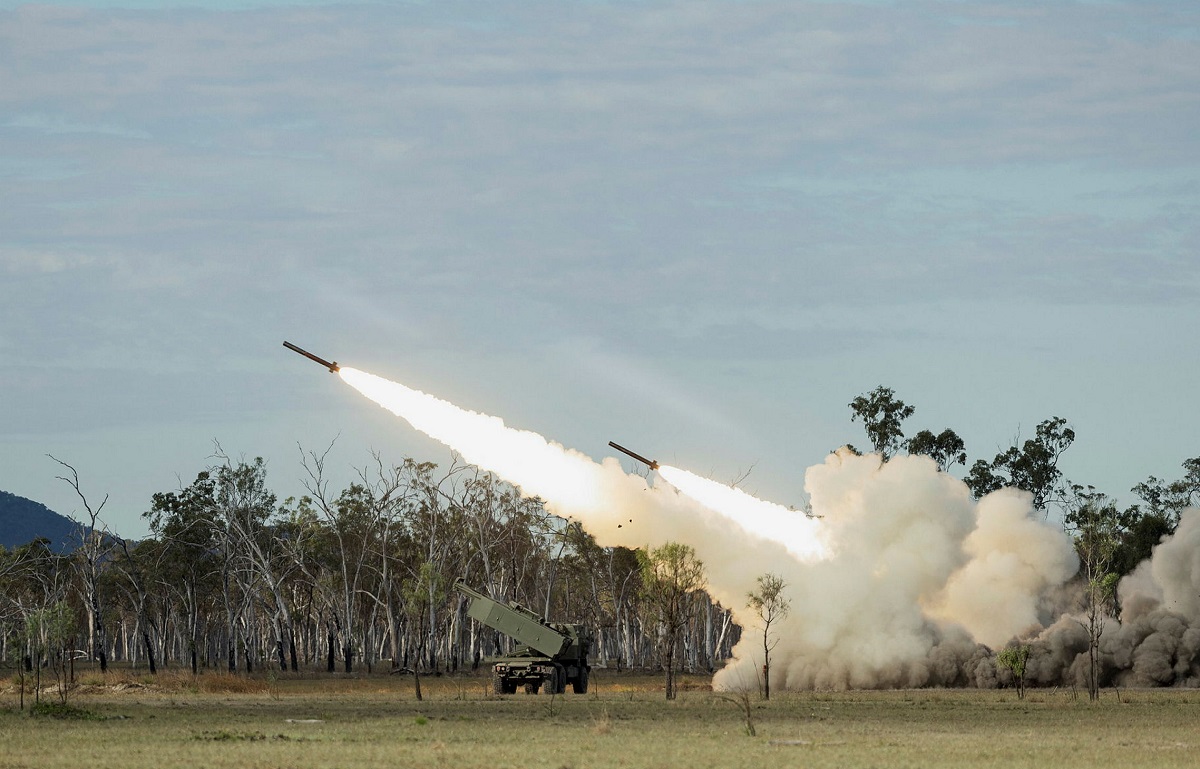
US Army HIMARS launch GMLRS rockets during Exercise Talisman Sabre in Queensland.
Defence Minister Richard Marles said the government had delivered on its promise to rapidly acquire the long-range strike capability.
“We are making record investments to ensure the Australian Defence Force has the capability it needs, when it needs it, to keep Australians safe while also supporting a future made in Australia,” he said.
Minister for Defence Industry and Capability Delivery Pat Conroy said the delivery meant the capability was on track to be operational four years ahead of the original schedule.
“HIMARS is a world-leading capability delivering accurate firepower at long ranges, resulting in a more than tenfold increase in army’s striking range,” he said.
“This is about equipping our ADF right now with state-of-the-art capabilities that enable it to operate effectively on land, sea and in the air to deter aggression and safeguard Australians.
“Equally crucial will be the munitions and support systems that sit behind HIMARS – and that’s why we’re manufacturing Guided Multiple Launch Rocket System (GMLRS) missiles in Australia this year, to reinforce robust domestic supply chains that we control and create local jobs.”
Army Major General Jason Blain described the delivery as a significant week for the army, with a new capability that would give it unprecedented reach.
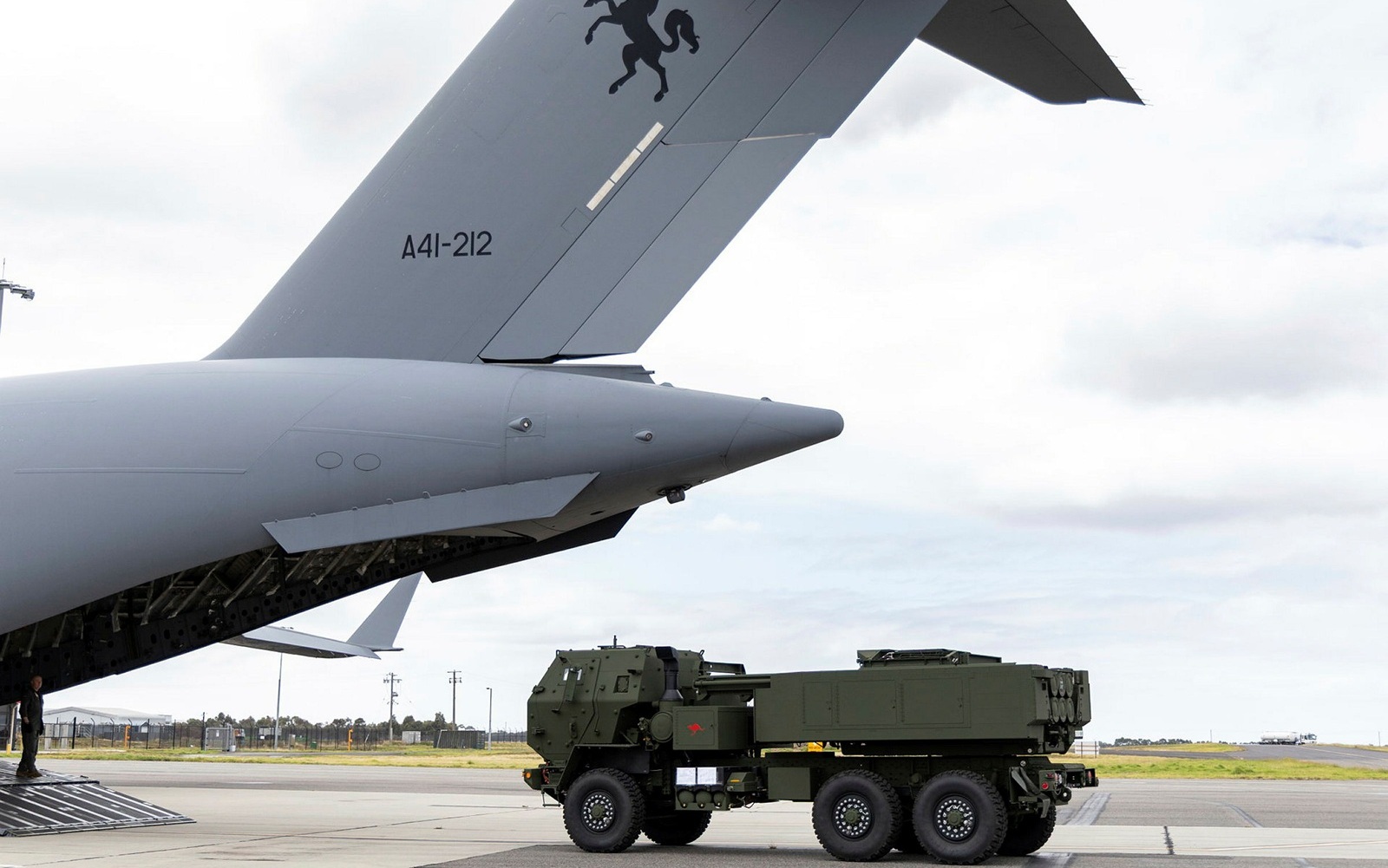
A HIMARS vehicle being unloaded from an RAAF C-17 transport at the Avalon Airshow.
“For much of our army’s history, our artillery has been limited to ranges in the tens of kilometres – but this is the system that takes our army into the missile age,” he said.
“Thank you to everyone involved from [Capability Acquisition & Sustainment Group], Australian Army, the US Government and Lockheed Martin for their partnership in delivering this outstanding, advanced capability for our army.”
An additional six HIMARS are scheduled to be delivered in 2025, with 12 more in 2026, and the balance by the end of 2028.
Under Project LAND 8113 Phase 2, there is an opportunity for additional units to be acquired to equip a second army long-range fires regiment for a land-based naval strike capability. This phase sees HIMARS pitted against the locally made Thales/Kongsberg StrikeMaster system, which can fire Naval Strike Missiles.


